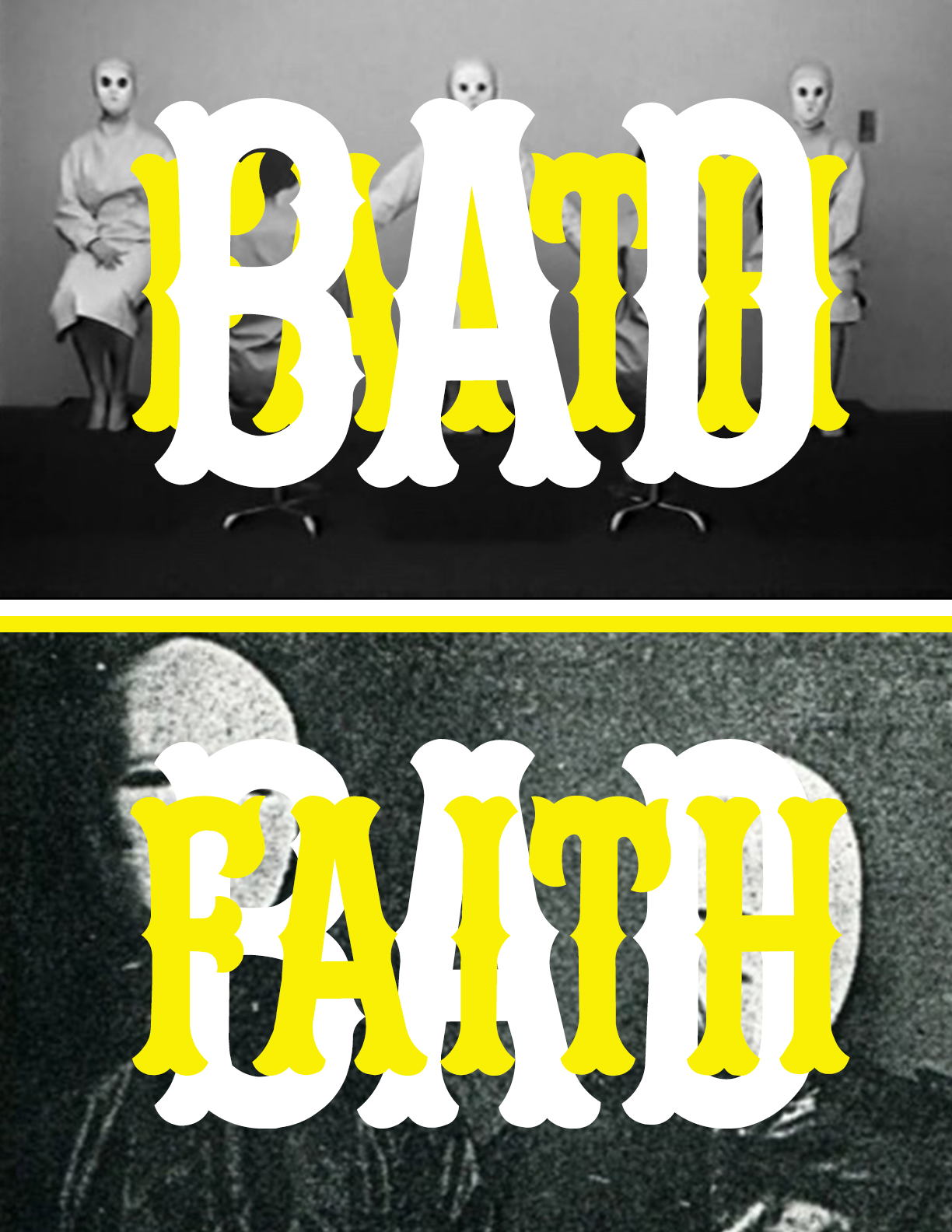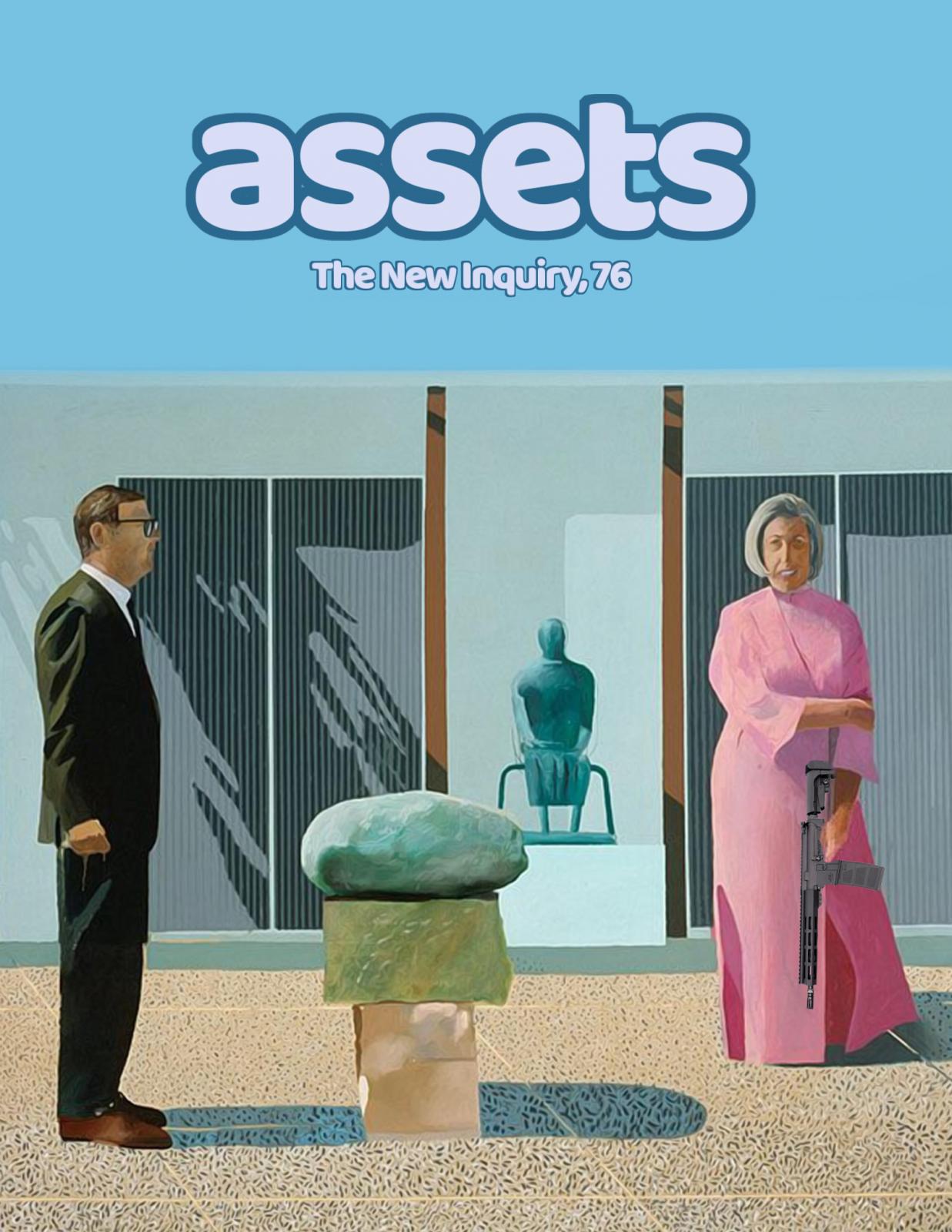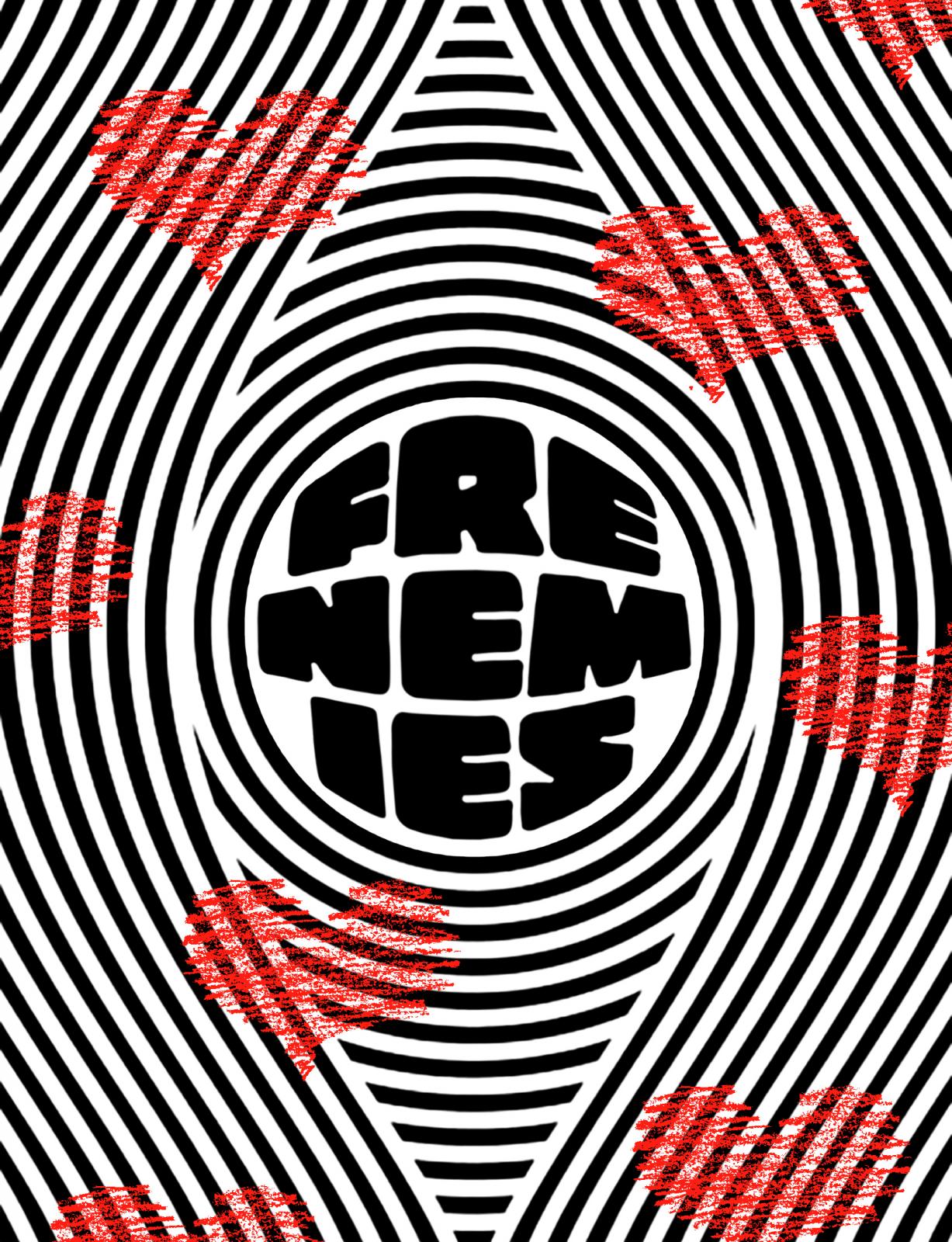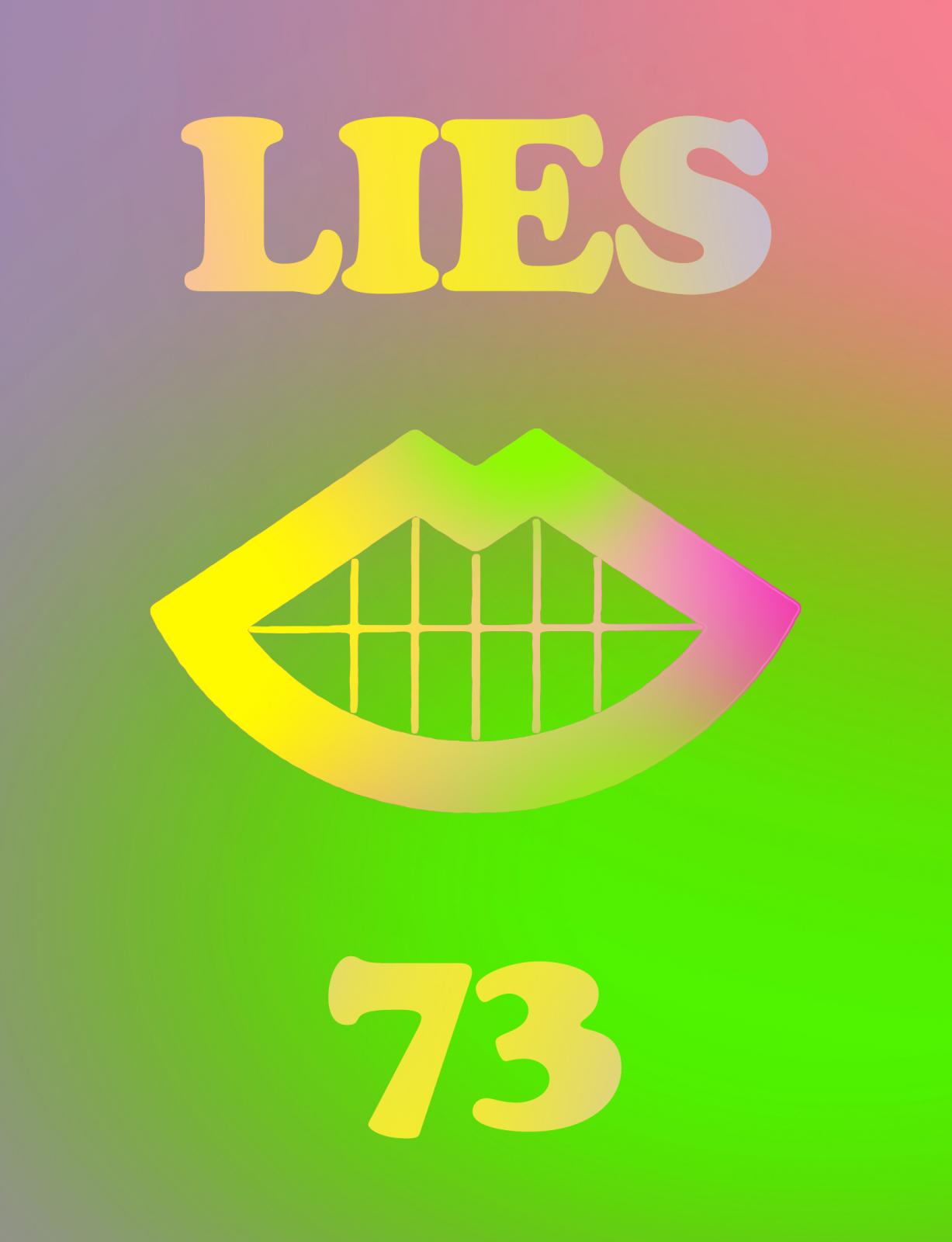Bad Faith
Editors' Note
Bad faith: a magnanimous euphemism. To accuse someone of acting in bad faith is to assume that their motives are duplicitous. It avoids calling them a con artist outright. Before it was a cliché, bad faith was a philosophy popularized by the high-bourgeois Sartre and de Beauvoir, who founded it on their prior faith in authenticity. They saw compulsion of any kind as a sort of dirtying of the beautiful authentic soul. Their prime example was that of the service worker whose conduct lets them know that he does not truly hope they have a wonderful meal. Asking someone not to act in bad faith is asking them to admit that we know they know what they’re doing. But any request for authenticity seems hopelessly nostalgic at a time when all economic activity is predicated on the laundering of multiple ongoing frauds.
In law, a bad-faith counterpart is one who enters into an agreement with information in excess of the contract, primarily regarding the intent or means to fulfill the terms. But as legal scholar Carole Pateman has shown, this contractual order already operates in bad faith, as it allows for patriarchal control of the social order to persist. The law, as everybody knows, only codifies what power has already achieved as justice, and therefore to take it as an innocent map of conduct is already to be tricked into colluding. The only possible justice would be the abolition of the order itself. What the #metoo moment exposes is not just that there are sexual predators with institutional power but that appeals to trust the process were always in bad faith, because the process meant nothing but the attempt by patriarchs to exonerate themselves.
Still, the utility of the concept of bad faith with regard to the modern condition can be seen in the following contradiction: Accusations of bad faith cannot land properly, because no one can truly have good faith in this system of adjudicating claims and accusations; claims of good faith can only ever be in bad faith, because faith in the system of adjudication is already a failure of the injunction to believe in justice. That is all to say, there is no way out of this world through an analysis of beliefs in it; perhaps what is needed, instead, is a faithless commitment to that which does not yet exist.
In her review of Prairie Rising, Jaskiran Dhillon’s account of the failures of Canadian efforts at “inclusion” for Indigenous youth, Anne Spice calls this contradiction ironic: “We are chided for not wanting to participate in a system that was built on and for our elimination, and that draws us away from struggles to reclaim our land and sovereignty.” Her clear-eyed view of how the ruse of “participation” and “choice” throws up the smokescreen of “inclusion” to hide the underlying logic of elimination is a useful guide to how bad faith works to hold the current world together. Spice calls for a counterpractice of our own bad faith: “From our respective positions, we leverage institutional resources even though we know the institutions will not liberate us . . . we pay reparations, we make amends, we commit ourselves to each other.” What else is there to believe in?
This is a system that has been built on falsehoods from its inception. In their treaties with Indigenous peoples, the United States government acted under a bad-faith acknowledgement of Indigenous forms of governance and belonging, acknowledgements revoked when the growing nation needed more land, more resources, fewer Indians in the way. Adapting the colonizer's language of legal deceit, Indians of All Tribes, who claimed Alcatraz Island as Indian land in 1969, released the Alcatraz Proclamation to reveal the absurdity of America’s claims to legitimate rule. The proclamation’s litany of ongoing colonial conditions on Indian reservations remains relevant today. The annotated version in this issue connects Indians of All Tribes’ concerns to historical and contemporary incidents of Indigenous struggle and government abuse.
The antiblack political order, as Jackie Wang argues in an excerpt from her Carceral Capitalism, operates on a logic of exploitability and disposability regarding blackness. Examining elements like the extractive nature of bad-faith loans that include black Americans in the civic order only as borrowers, she outlines the various new techniques of what she calls carceral capitalism that labor to reproduce blackness as lootable. “The looting persists because residents in these zones have access to neither “good-faith” credit nor the material means to escape spatial exposure to predation,” she argues, and is “intimately tied to the construction of black Americans as disposable and subject to mass incarceration.” No wonder that figures like Philando Castile’s surviving sister repeat, “I will never have faith in this system.”
It’s a system that privileges some bodies over others, with a view toward eliminating most bodies altogether. As Emma Stamm writes in “Immortal Techniques,” the injunction to know yourself has taken the sinister form of big-data DNA-testing companies, who will ultimately own the rights to the information contained therein. As the example of Henrietta Lacks shows, the agenda is far from one of a release from suffering. These tests instead show how close we are to achieving the ultimate desire of capital: a fleshy subject unable to make demands, perpetually at work.
Transcendence of the body is the bait deployed by another scheme of the current order: AI-assisted 3-D exhibitions allowing the audience to “dialogue” with Jewish Holocaust survivors once there are no more living ones. As JB Brager ascertains, the project is less one of preserving an important historical lesson for all time and more one of maintaining the primacy of certain claims to victimhood while silencing the victims of other genocides whose erasure is essential to the ongoing antiblack settler-colonial order of the world.
Another bad-faith attempt by capital to rid itself of bodies with onerous claims to justice or even consideration can be seen in the attempt to reduce the task of dismantling ableism to one of developing curative technology. Taeyoon Choi argues that instead of adopting this dangerous, condescending outlook, we follow the lead of disabled users of technology themselves, who practice a politics of mutual care instead, tending to one another by complementing rather than supplanting their autonomy.
Writing on the epidemic of male loneliness, Amba Azaad remarks on the inability of those in power to meet their needs in equally reciprocal relationships. The rich demand their hired help smile and converse with them; men demand gendered companionship, and “there must be something terribly wrong if a Regular Nice Guy has to pay for it.” Such classic bad faith may be one of the most venerable examples of its genre, but its tenacity keeps it a relevant concern.
The norms of liberal debate require a performance of patience and civility, entailing yet another misallocation of emotional labor. Anti-trans feminists have weaponized free-speech norms, Kylie Benton-Connell notes, crying censorship and demanding that their critics play nice. Benton-Connell argues that treating dehumanizing bigots as serious and respectful interlocutors is a strategic mistake, enabling the kind of attacks we are now seeing from the right. While the case can be made for different modes of engagement with the audiences that engage with anti-trans feminists, “debate is not a useful mode of engagement with the people whose sense of self and/or clickbait-derived paycheck is dependent on their bigoted position.”
The phrase “witch hunt” has become a confused one for those who regard the outing and ousting of sexual predators as akin to the historical persecution of women under the accusation of witchcraft. Many women have corrected these wrongheaded interpretations, some of whom proudly take up the title of witch, either as actual pagan practitioners or more often as an abstracted identity marker. Remarking on the associations between “savage” Indians and witches, Lou Cornum argues that “the current trend in witch infatuation marks an alliance foreclosed.” This is an alliance between those who practice bad faiths of a different kind: social, political, or religious beliefs counter to the dominant Christian nationalism of the United States. The cultural celebration of non-Christian witchiness coincides with the banning of other non-Christians, Muslims who along with Indians and Black people have been marked as backward and dangerous to the body politic.
As Esme Douglas argues in “Laughing At America,” the comedian Sarah Silverman’s project of exposing “the bigotry that goes unnoticed” only works by presuming a white audience, and Douglas observes in her “ironic racism” a primary desire to convince this audience that she—and perhaps by extension the audience—is not guilty.
This white feminist unease with confronting the fact of racialized oppression is dramatized in Rachel Ingalls’s Mrs. Caliban, a 1983 novel resissued by New Directions and reviewed by Sam Huber here. In the novel, a B-movie monster stumbles into the housewifely suburbia of second-wave feminism and strikes up an easy affair with unsatisfied Dorothy, restaging the classic scenes that, as Spivak argued, employ the “not-yet-human Other” on whose back such feminists’ independence is achieved. Instead of plunging into one bad-faith fantasy or another—that the monster could be incorporated into the vile precincts of suburbia, or that he could liberate Dorothy with his otherness—Huber notes that the novel offers a sober detente between the two instead.
There are not ever only two narratives; there is also the story made in the friction in between. In “August 4, 2014,” an excerpt from They Can’t Kill Us Until They Kill Us, a recently published collection of essays by Hanif Abdurraqib, a quotidian telling of an airplane journey is accompanied—or interrupted—by a confessional account of avoidance and fear. The essay is presented with the appearance of a draft in track changes, most of the words struck through and the more poetic rumination extracted in bolded text.
Such friction is what animates the lives we live inside of these cathedrals of bad faith, keeping tabs on the discrepancies between our existences and their narration while we maintain the fiction that to reiterate these narratives is the only legible way to speak. But bad-faith readings can liberate us. The essays in this issue show that in the right hands, bad faith can be a clarifying lens for sorting out what might be worth believing in. An imperfect lens, maybe, but have faith: A new world is coming.
Featuring
-
Editors’ Note, Vol. 66: Bad Faith
-
The Participation Problem
-
Carceral Capitalism
-
Immortal Techniques
-
One or Many Directions
-
No Place Like Home
-
Laughing at America
-
The Malignant Melancholy
-
White Magic
-
Up for debate
-
Artificial Advancements
-
The Alcatraz Proclamation: Annotated
-
August 9th, 2014





